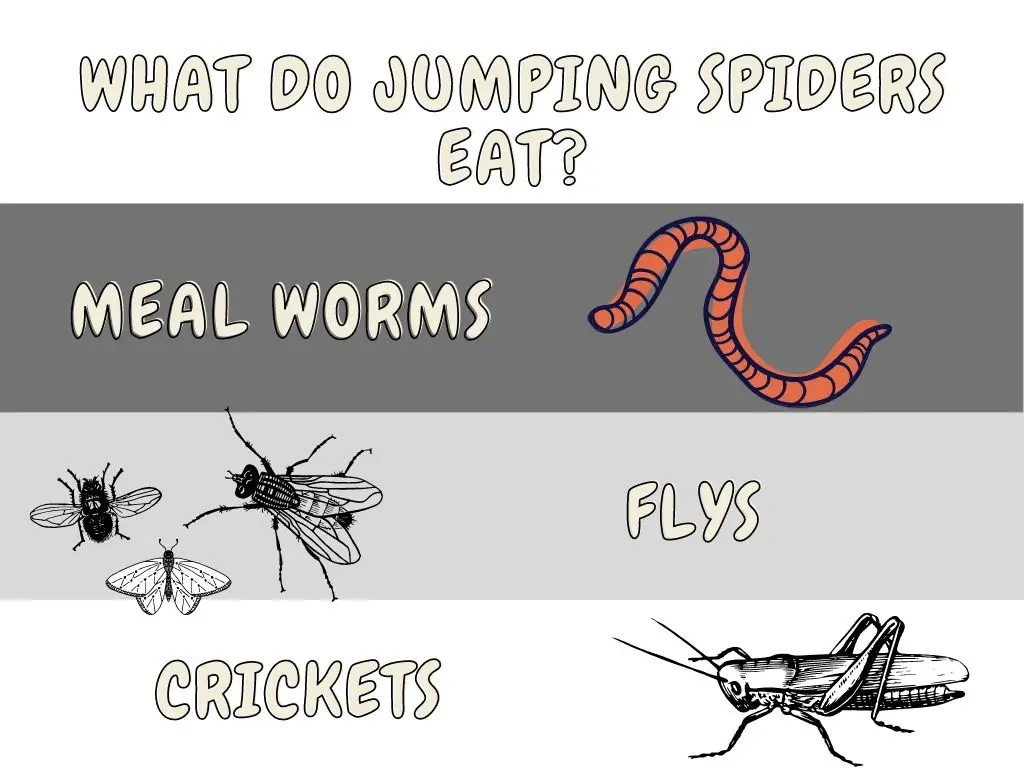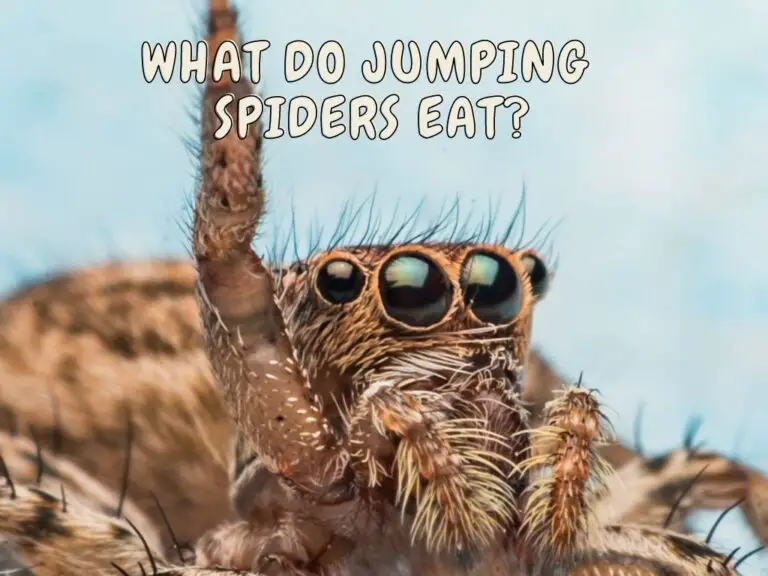Jumping spiders are fascinating and highly visual creatures that are popular as pets due to their unique characteristics and relatively easy care. As insectivores, they have a particular diet that is essential for their growth and development. In this article, we will explore what jumping spiders eat, what food they love to eat, how to feed them, and some tips and facts about their diet.
Feeding A Jumping Spider
Jumping spiders are carnivorous and feed primarily on small insects, including flies, crickets, moths, and beetles. They are also known to eat other spiders, including members of their own species, and occasionally even larger prey such as grasshoppers or caterpillars.
To feed your jumping spider, it is essential to provide live prey. It is best to avoid feeding them insects that have been exposed to pesticides or other chemicals as this can be harmful to your spider. You can purchase live insects at pet stores or online retailers.
It is recommended to feed your jumping spider small amounts of food every two to three days. Overfeeding can lead to obesity and other health problems, so it is important to monitor their intake carefully. Additionally, make sure to remove any uneaten prey after a few hours to prevent it from harming or stressing your spider.
Best Nutrient-Rich Foods for Jumping Spiders in Captivity
| Insect | Nutritional Benefits |
|---|---|
| Fruit flies | High in protein and fat, good source of calcium and phosphorus |
| Crickets | High in protein and fiber, good source of vitamins and minerals |
| Mealworms | High in protein and fat, good source of vitamins and minerals |
| Waxworms | High in fat, good source of calcium and phosphorus |
| Silkworms | High in protein and fiber, good source of vitamins and minerals |
| Roaches | High in protein and fat, good source of vitamins and minerals |
It is important to note that while these insects provide good nutritional benefits for jumping spiders, it is still recommended to offer a varied diet to ensure your spider is receiving all the necessary nutrients for their health and wellbeing. Additionally, it is important to avoid feeding insects that have been exposed to pesticides or other harmful chemicals, as this can be harmful to your jumping spider.

When My Jumping Spider is not eating
Jumping spiders are generally good eaters and will actively hunt and feed on prey. However, there may be instances where your jumping spider is not eating, which can be a cause for concern. Here are some signs that your jumping spider may not be eating and what you can do about it:
Signs that a jumping spider is not eating:
- Refusal to eat or lack of interest in prey.
- Weight loss or lack of weight gain.
- Inactivity and lethargy.
- Abnormal behavior or movement, such as difficulty walking or climbing.
What to do if your jumping spider is not eating:
- Ensure that your jumping spider’s enclosure is suitable and meets their needs, such as appropriate temperature, humidity, and lighting.
- Check that the prey you are offering is appropriate for your spider’s size and feeding habits.
- Try offering a variety of different prey to see if your spider shows interest in any of them.
- Consider feeding your jumping spider during different times of the day, as they may have different feeding patterns or preferences.
- If your jumping spider is still not eating, it may be necessary to take them to a veterinarian who specializes in exotic animals for a check-up to rule out any underlying health issues.
It is important to note that jumping spiders can go several days without eating and may have periods where they eat less frequently, especially during molting or when approaching adulthood. However, if your jumping spider continues to refuse food for an extended period or shows signs of weight loss or illness, it is important to take action to address the issue.
Additional tips and facts:
- Some species of jumping spiders are known to have a preference for certain types of prey, such as fruit flies or crickets.
- Jumping spiders have excellent eyesight and use it to hunt prey. They can even recognize individual insects and avoid those that are dangerous or unappetizing.
- In the wild, jumping spiders have been observed hunting prey much larger than themselves. However, as pets, it is important to provide prey that is appropriate for their size and feeding habits.
- Feeding your jumping spider a diverse range of prey can help ensure they receive all the necessary nutrients for its health and well-being.
Conclusion:
In conclusion, jumping spiders are carnivorous creatures that primarily feed on small insects. Feeding your jumping spider a healthy and varied diet is crucial for its growth and development. By following the tips and recommendations outlined in this article, you can provide your pet jumping spider with a nutritious and satisfying diet that will help them thrive.
No related posts.




